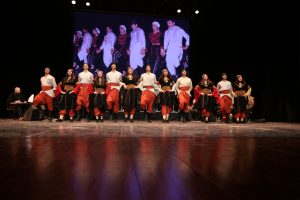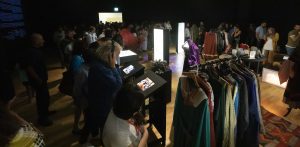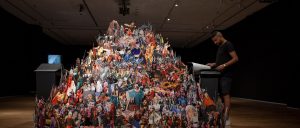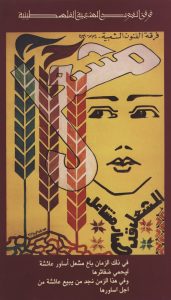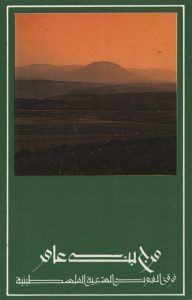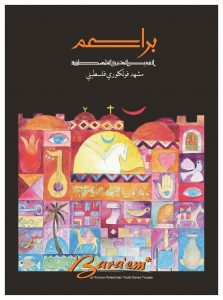Translated by Jamileh Abed
In 1979, a group of young and energetic people, driven by the desire to change some traditions but at the same time preserve those that are valuable and beneficial in Palestinian society, decided to form a dance troupe. As with all decisions, the future can be imagined but is never certain, and success is never guaranteed, as was the case for these young individuals. The awareness of their milieu and society’s needs was not the same as today, 40 years after the troupe’s establishment. Nevertheless, they had a vision at the time, which was to form a sustainable dance troupe that could grow and bring about the desired changes in society while at the same time ensuring a balance between the old and the new. With determination to face the unknown challenges that lay ahead, the troupe was established in March 1979. The founders recognized that this project would require wisdom, careful inquiry, discussion, and scientific research in the field of folklore.
Rebirth and renewal have continued to be the themes that run through the past years of growth, allowing the troupe to remain vibrant, harmoniously integrating new ideas in the same way as railway workers connect one railway station with another by laying and linking iron bars to connect to the world. In this way, the troupe has provided an unlimited space for freedom and imagination within the framework of its long-standing principles and vision.
The troupe, therefore, has been able to welcome the new and preserve the old, weaving all together in such a way as to preserve the integrity of the whole. After 13 years of active membership in El-Funoun, I only became aware of its diversity and tremendous growth when I was able to access its 40-year archive.
Scratching the surface
The experience of opening the troupe’s archive was both a highly sensitive and joyous experience. This was due to the complexity of defining the form and function of the archive. First, the actual physical archive is symbolic in its representation of the institution, and at the same time, it is a reflection of the whole of Palestine. Therefore, it is not possible to look at the troupe’s artistic experience without scrutinizing or referring to the liberation process, complete with its social and cultural dimensions, as well as to questions concerning the relationship between the intellect and politics and the intellect and the revolution, as well as the relationship between the dancer and his/her society. Hence the experience cannot be viewed through the artistic dimension only, although there have been many attempts in the past to do just that. This was documented in several minutes of a meeting held by the troupe during its early years, as well as in the internal bylaws and first structure drawn up by the troupe in 1979–1980.
Second, this archive is complex and cannot be categorized as an ordinary archive. To describe it metaphorically is to imagine a thickly branched tree with an unlimited number of seeds that provoke confusion as to where to start, especially since there are some seeds and branches that are still growing. The inability to categorize it in the traditional manner does not mean that it lacks organization but rather that it is present in forms relating to dates and groups of people. It was therefore possible for the troupe at the beginning to envisage a panoramic view that encompasses time and place simultaneously, enabling one to capture the social, political, and artistic dimensions of the troupe’s experience.
Third, the archive is as old as the troupe. And it is important to note that the stages of growth of the troupe and the archive are intertwined and connected to one another. In other words, the archive of the first generation is organically connected to the second archive of the second generation. This means that the development of the troupe and its archive did not invalidate previous experiences. On the contrary, the archive was transformed into resources for building and developing the troupe’s productions and performances, thus enriching its scope and horizon, exemplified by its performances over the years. This in turn made the option of only scratching the surface necessary in order to produce the exhibition From the Archive Room, which was the main goal.
From the Archive Room
It is impossible to contain El-Funoun’s archive in one exhibition or in one room. This became apparent during the many heated discussions that were held with the exhibition’s curator, Yazid Anani, who examined the troupe’s long experience from many angles. Yazid reached the basic conclusion that looking at the archive is the same as looking at the troupe now. Moreover, the troupe’s experience, artistically at least, cannot be seen from only one angle, nor can we look at the archive only from a single angle.
Although hundreds of exhibitions and works of art can be created to reflect the troupe’s experiences, the archive was presented in an exhibition that would focus on the most striking and essential, since its aim was to provide public access to the archive for the first time. It was astonishing to discover the members’ reactions during the preparation process: their sense of personal ownership of the exhibition provoked a certain stress that was not due to the preparation process but was the result of an individualistic mentality that would have impeded the healthy functioning and success of the troupe had it been present during the previous 40 years. It is possible, however, for this feeling and dedication to work positively when it is part of collective experience, becoming a means of cohesiveness among the team, which is the secret of the troupe’s continuity.
Yazid Anani, the curator of the exhibition, recognized the complexity of the team’s work and the underlying drive and sense of belonging and ownership. Because of this, he requested that no interference or intervention be made by any member of the troupe in the preparation process of the exhibition; his request was honored.
It is worth noting that the artistic creativity of the troupe is subject to its cumulative experience over the years and cannot be reflected in a reality that works increasingly against collective action. On the contrary, the troupe’s work and continuity are based on the principle of collection action, which is a reflection of its identity and vision.
El-Funoun develops and promotes contemporary Palestinian dance through reviving Palestinian folklore and building on it by adding El-Funoun’s unique dance style. This style is a product of El-Funoun’s own social and artistic perception influenced by Arab and international dance experiences.
The troupe is not a stagnant reality but a live body that grows and develops in harmony with the view of world folklore and heritage, in general, and that of Arab Palestinian folklore and heritage, in particular. The passion of the troupe’s founders is linked to the maturity, awareness, sense of responsibility, and commitment expressed by the present members in the team’s artistic productions, as well as in ensuring continuity of experiences cumulatively passed on from generation to generation.
In conclusion, the archive provided a window that allowed us to view a vast field of human experience that is dense with varied knowledge and skills that are artistic, political, and social, but first and foremost human, and which has carried its members throughout the years from a personal experience towards a collective one that concerns and benefits an entire people.
Article photos courtesy of A.M. Qattan.



